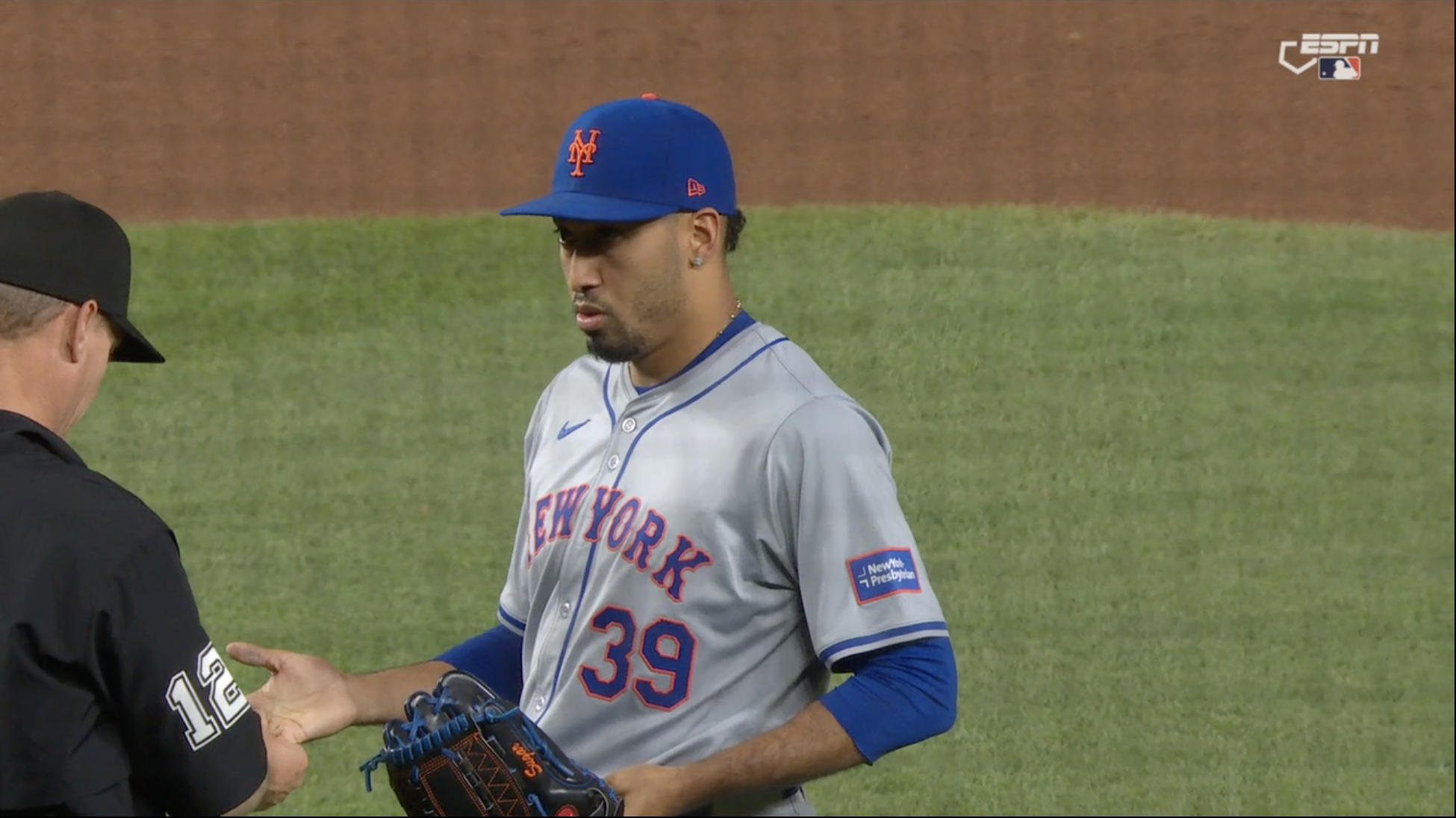
Edwin Díaz of the New York Mets is checked for foreign substances by an umpire, prior to entering a game versus the Chicago Cubs. Or, I should say "attempting to enter a game," because this particular check did not go particularly well for Edwin Díaz.
Foreign Substance Checks
This part gets a bit silly, but bear with us. So, you know how on the interstate, there's a speed limit, but most people are using that as minimum speed rather than a maximum? Well, technically, a pitcher is not allowed to put any foreign substances on the baseball, nor are they allowed to scuff a ball before they pitch. These are both techniques that can affect how a pitched ball performs, potentially adding spin and/or movement to pitches.
In reality, almost every pitcher uses something to, at the very least, help them grip the baseball a little better1. This has been a long-established part of baseball gamesmanship; you will often see pitchers with extremely shiny arms (sunscreen, which then typicall gets mixed with the rosin bag already present on all big-league mounds) or with dark spots somewhere on their caps (pine tar), and even when someone is more obviously out of line, opposing managers tend not to make an issue out of it, because their own pitchers are ultimately doing the same types of things.
However, there is a fine line between “gripping the ball a little better” and “using superglue to get unnatural levels of spin on the ball.” During the late 2010s and into the 2020s, it became clear that more and more pitchers were on the latter side of that line— especially as advancements in pitch tracking technology made it easier to not only detect the spin rates of pitches, but to confirm how effective higher spin rates could be. At the same time, pitchers were becoming more and more dominant— strikeout rates were climbing, and the batting averages of hitters were plunging.
MLB finally took action in the middle of the 2021 season, declaring new illegal substance checks for pitchers; any pitchers caught with foreign substances on their bodies would be subject to immediate ejection, along with a 10-game suspension. The league has made some small changes to the timing and format of these checks in the ensuing years; at this point, these checks usually include inspection of a pitcher’s hand and arms, along with their glove, cap, and belt area. There are no objective rules in terms of what constitutes a violation; umpires basically have to use their own judgement as to what winds up being “too sticky,” and you’d better believe that means that there’s a lot of arguing every time they decide someone’s too sticky for their own good.
If you’re wondering if the rules have worked— well, spin rates plunged in anticipation of the rule changes, and for a little while thereafter, but have been creeping up ever since, so… to return to the analogy that we opened up with, MLB seems to be content with letting everyone do 70 in a 65, but will crack down if they see someone trying to zoom by at 90, except that no one is really sure how the radar is calibrated.